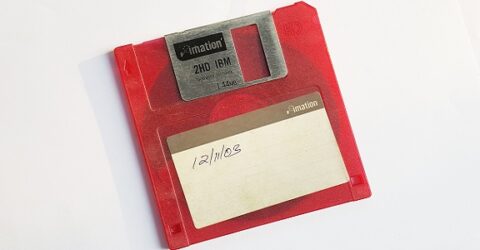Easy ways to recover lost data from an old or crashed PC
Computer failure doesn’t have to mean disaster – we outline some easy ways to get your files back when things go wrong.

Computers are essential, but they’re also surprisingly fragile.
Packed with tiny components and microprocessors, their power lights often provide the only indication of how hard they’re working, or what’s happening inside their casings.
When something does go wrong, it can be sudden and catastrophic in equal measure, potentially heralding the end of that machine.
If you’re a daily Microsoft OneDrive user, that’s not such a big deal because every document you’ve edited or saved will be backed up in the cloud in real time.
Simply log into your OneDrive account on a new device, and the process of synchronising that data back onto your new device begins.
But what if you’re not in the habit of enabling live backups? How can you recover lost data that may be important or irreplaceable?
After all, we don’t live in the age of floppy discs or CD-RWs any more, when data was routinely ejected from a machine and stored elsewhere.
Don’t panic
Firstly, maintain a sense of perspective on whatever has happened.
Data is stored on a hard disc drive within the computer, which is one of many components bolted onto the motherboard.
If you’re getting reports of CPU over temperature errors or graphics card failure, hard disc drive (HDD) data shouldn’t be affected.
The drive could be extracted and reinstalled into a new device, or plugged into a separate machine and treated as an external data source.
Today’s solid-state HDDs are far more robust than their spinning-disc ancestors, where the read/write head could potentially fail and cause irreparable damage to the disc’s surface.
But what if your computer won’t even power up?
Look for alternative sources of data storage
Again, don’t panic if you’re seeing error messages or the dreaded Blue Screen of Death when attempting to power up an old device. You should still be able to recover lost data.
Think about all the emails you’ve sent and received with attachments. Unless you’re still using the antiquated POP method of email delivery, this data will be stored on a server somewhere.
The same is true of online-only content (Trello boards, social media photos, Google Docs/Sheets files, etc) and web-based data including browser favourites or stored passwords.
We often forget how much of the data we generate is hosted and stored in the cloud, accessible from other devices with the appropriate login credentials.
In the age of Spotify and social media, the data stored on your machine’s C drive might be limited in volume.
Extract the HDD
Depending on the malaise that’s affecting your device, it might be fast approaching the end of its life.
If you’re concerned about a possible power surge or motherboard failure frying key components, emergency surgery may be necessary.
Ensure the warranty has definitely expired (if not, the manufacturer may still be able to help) before getting a small screwdriver and opening the case.
Unclip the hard disc drive before it can be damaged by other failing components, before setting it aside.
Call in a specialist
Take your device/extracted HDD to a computer repair shop, or contact online data recovery specialists for quotes. These are often no-recovery no-fee.
Experts may be able to extract data even after a fire or malware attack has seemingly rendered a HDD inoperable.
The studiedly random way binary bits of data are stored on HDDs could work in your favour, making it less likely files could be erased entirely.
Many modern operating systems also create periodic backups of hard drive content, often known as mirrors, which may enable a specialist to roll back to a previous version.
Rescuing most of your data is far better than losing all of it, even if recent file revisions aren’t included.






